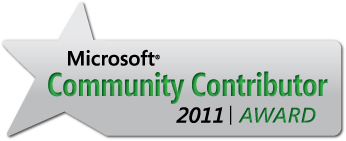Introduction:
In this article I will explain how to install Ajax Control Toolkit in visual studio and uses of Ajax controls in asp.net.
In this article I will explain how to install Ajax Control Toolkit in visual studio and uses of Ajax controls in asp.net.
Description:
First of all what is Ajax why we go for that one? Is there any specific reasons to use that in our applications?
First of all what is Ajax why we go for that one? Is there any specific reasons to use that in our applications?
AJAX stands for Asynchronous JavaScript and XML. Ajax is not a new programming language but its new way to use existing standards. Ajax is used to transfer data between the server and client without reloading whole page. In Ajax only necessary data is transferred back and forth between the client and web server that minimizes the network utilization and processing on the client. Ajax contains a rich set of controls that we can use to build highly responsive and interactive Ajax-enabled ASP.NET Web Forms applications. Gmail is the best example for Ajax enabled site and especially Google have made Ajax very popular.
Advantages of Ajax
Asynchronous calls — AJAX allows for the ability to make asynchronous calls to a web server. This allows the client browser to avoid waiting for all data to arrive before allowing the user to act once more.
Minimal data transfer — by not performing a full postback and sending all form data to the server, network utilization is minimized and quicker operations occur. In sites and locations with restricted pipes for data transfer, this can greatly improve network performance.
Limited processing on the server — Along with the fact that only the necessary data is sent to the server, the server is not required to process all form elements. By sending only the necessary data, there is limited processing on the server. There is no need to process all form elements, process the ViewState, send images back to the client, or send a full page back to the client.
Responsiveness— because AJAX applications are asynchronous on the client, they are perceived to be very responsive.
How Install Ajax in visual studio?
If we want to use Ajax features in our application just follow the below steps to download and start using the Ajax Control Toolkit with Visual Studio:
1) First step is to download the latest version of the Ajax Control Toolkit from CodePlex whichever suits to your visual studio. If you are using Visual Studio 2008 then you should pick the version of the Ajax Control Toolkit for .NET 3.5. If you are using Visual Studio 2010 then you can use either the .NET 4 or .NET 3.5 versions of the Ajax Control Toolkit.
|
|
2) After download the required version of Ajax toolkit open the downloaded file and extract all the files.
3) After that open Visual Studio and create a new ASP.NET Web Forms project or website. Open Default.aspx page in the project or website.
4) Now open Toolbox in visual studio and create a new Toolbox tab by right-clicking the Toolbox and selecting Add Tab. Name the new tab Ajax Control Toolkit.
5) Right-click beneath the new tab and select the menu option Choose Items. Click the Browse button and browse to the folder where you extracted the Ajax Control Toolkit. Pick the AjaxControlToolkit.dll and click the OK button to close the Choose Toolbox Items dialog. After that if we check Toolbox under Ajax Toolkit tab we are able to see the controls like this.
Now our Toolbox loaded with Ajax Controls and check these Ajax Tutorials to use those controls in our applications.
|
If you enjoyed this post, please support the blog below. It's FREE! Get the latest Asp.net, C#.net, VB.NET, jQuery, Plugins & Code Snippets for FREE by subscribing to our Facebook, Twitter, RSS feed, or by email. |
|||
 Subscribe by RSS
Subscribe by RSS
 Subscribe by Email
Subscribe by Email
|
|||





23 comments :
thnk u so much..
Can u plz help me how to fire a popup window while dropdownlist selected index change
can u plz tel me autocompleteextender
It was very useful.. Thank you for the efforts ..
gr8:)
Helpful tutorial , thanks dude.>>!
thankssssssssssssssssssss
Ankit Jain
i sucessfully added ajax but i nAjax Control Toolkit. tab the controls are invisible means not usable. what to do?
Nice help
nice
Very Helpful
Nice
Very easy to understand.. Thankssss
Superb!!! Thank you so much for the details steps with Video!!!
nice article
its all waste comments published
this article is of no use
very nice good for beginners
Suresh I'm your great fan, and I'm going through your each post and this time also you've rocked. But Suresh there are some ajax Controls are not working properly, like when I'm trying to drop Auto complete extender into the aspx page it is not coming at all., please help me out .awaiting for your reply
nice one !
thanks...........nice..........
nice
Note: Only a member of this blog may post a comment.